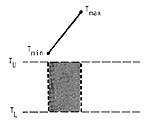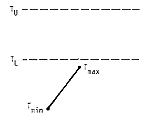Each image links to a larger image and formula.

Intercepted by the upper threshold.
|
|

Intercepted by both thresholds.
|

Entirely between both thresholds.
|
|

Intercepted by the lower threshold.
|

Completely above both thresholds.
|
|

Completely below both thresholds.
|


